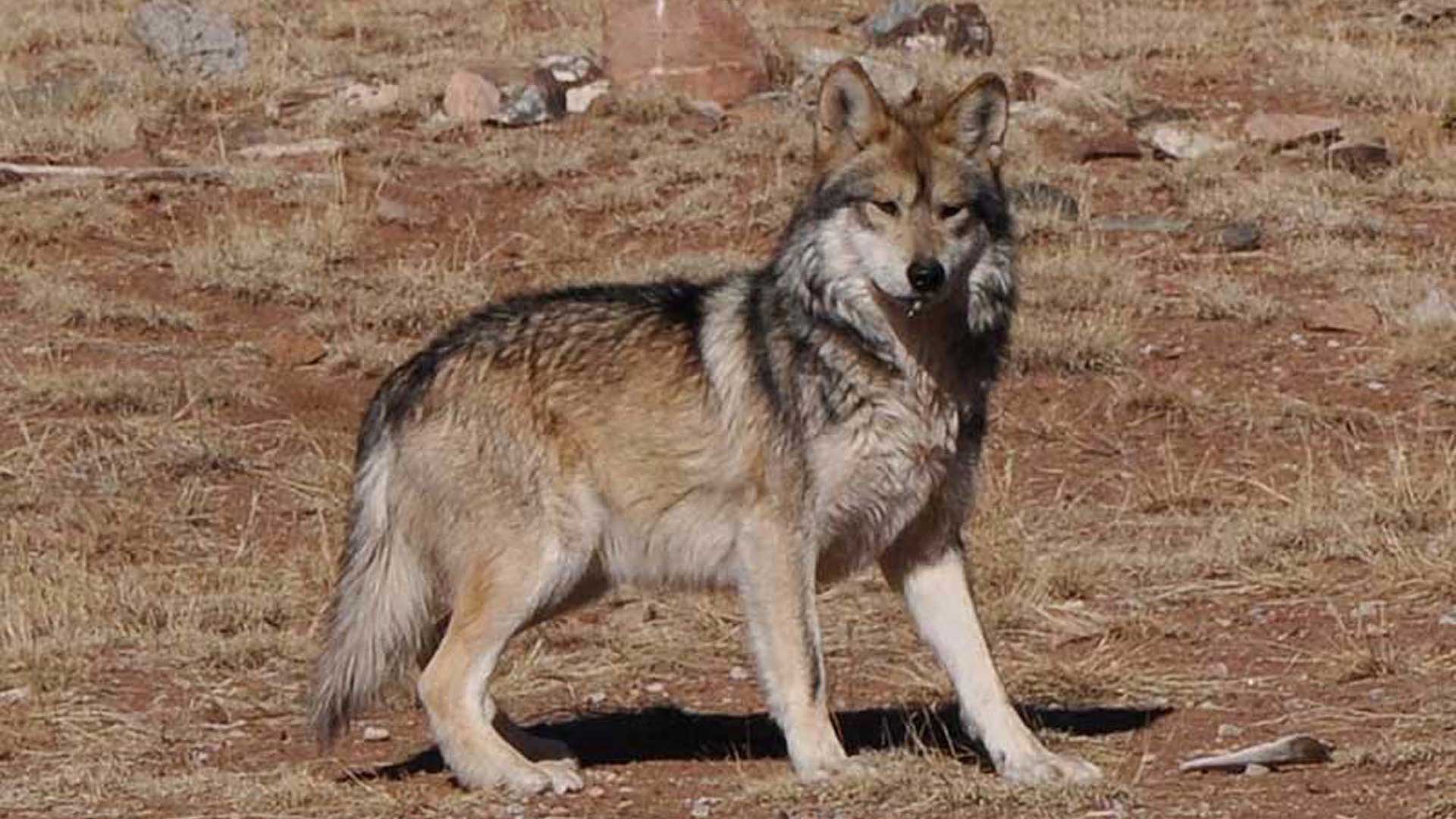 A Mexican gray wolf at the Sevilleta Wolf Management Facility in New Mexico in 2011.
A Mexican gray wolf at the Sevilleta Wolf Management Facility in New Mexico in 2011.
When biologists began their annual count of the Mexican wolf population in November, they hoped to find at least one more wolf than the previous year. They soon realized that the numbers far exceeded their expectations.
Recovery of wolves in the wild accelerated at an astonishing rate in 2022, with the population growing from 196 to at least 241 wolves, with 136 counted in New Mexico and 105 in Arizona.
The encouraging numbers were released Feb. 28 by the U.S. Fish and Wildlife Service, Arizona Game and Fish Department, and New Mexico Department of Game and Fish.
Jim deVos, Mexican wolf coordinator with the Arizona Game and Fish Department, said it’s the first time since the count began in 1998 that the number of Mexican wolves in Arizona and New Mexico surpassed 200.
“Here we are on our 25th-year anniversary and we’re up over 240,” deVos said. “No matter how you measure, 2022 is a fabulous year.”
It was the seventh consecutive year of population growth, more than doubling the pack size since 2017, according to the three departments.
In a press release, Brady McGee, U.S. Fish and Wildlife Service Mexican wolf recovery coordinator applauded the progress.
“We recorded more packs, more breeding pairs, and a growing occupied range, proving we are on the path to recovery,” McGee said.
“I’m going to hope that within my lifetime we’ll see recovery and delisting of a very unique animal that was part of the biotic community of the American Southwest,” he said. “That’s exciting.”
Biologists were most impressed with the number of pups that survived this year, deVos said. Of the approximately 121 pups born in 2022, at least 81 survived, according to the wolf count, which was conducted by an interagency field team from November through February. The typical survival rate for pups in their first year is 50%.
“Sixty-seven percent survival of pups in the wild, that’s monster,” deVos said. “That says the health of the population is good, both the physical health and the genetic health.”
This year’s report also documented 59 packs and 109 collared wolves in the wild, which is 45% of the population.
Biologists conducted ground and aerial surveys to gather information for the count. It’s important to count the wolves at the same time and way every year, deVos said, to maintain consistency.
The agencies said that while this year’s numbers show great success, the Mexican wolves still have more progress to make before they can attain the ultimate goal of being taken off the endangered species list.
For the Mexican wolf to be delisted, the population must be more than 320 for eight years, the last three of which have to be steady or increasing, according to deVos.
The Grand Canyon chapter of the Sierra Club said the U.S. Fish and Wildlife Service needs to focus on more than just the raw numbers of the population.
“Yes, it’s great that the numbers are going up. But having one population of wolves in a restricted area, that is not recovery,” said Sandy Bahr, Grand Canyon chapter director. “That’s not what is needed for the biological diversity of the area. That’s not what is needed for the wolves.”
Bahr said the agencies need to continue to work for more genetic diversity and more well-bonded pairs.
Cross-fostering is a method used by the Mexican wolf interagency field team to increase genetic diversity in the wild population. Biologists introduce captive-bred pups to a mother who already has pups near the same age so that the genetics are diversified.
Bahr argued that cross-fostering is not enough and that more adult wolves need to be released into the wild as bonded pairs.
The Mexican Wolf Recovery Program started in 1998 when the species was near extinction and just four wolves were counted. The effort has gained momentum with the numbers doubling between 2015 and 2021, from 98 to 196.

By submitting your comments, you hereby give AZPM the right to post your comments and potentially use them in any other form of media operated by this institution.